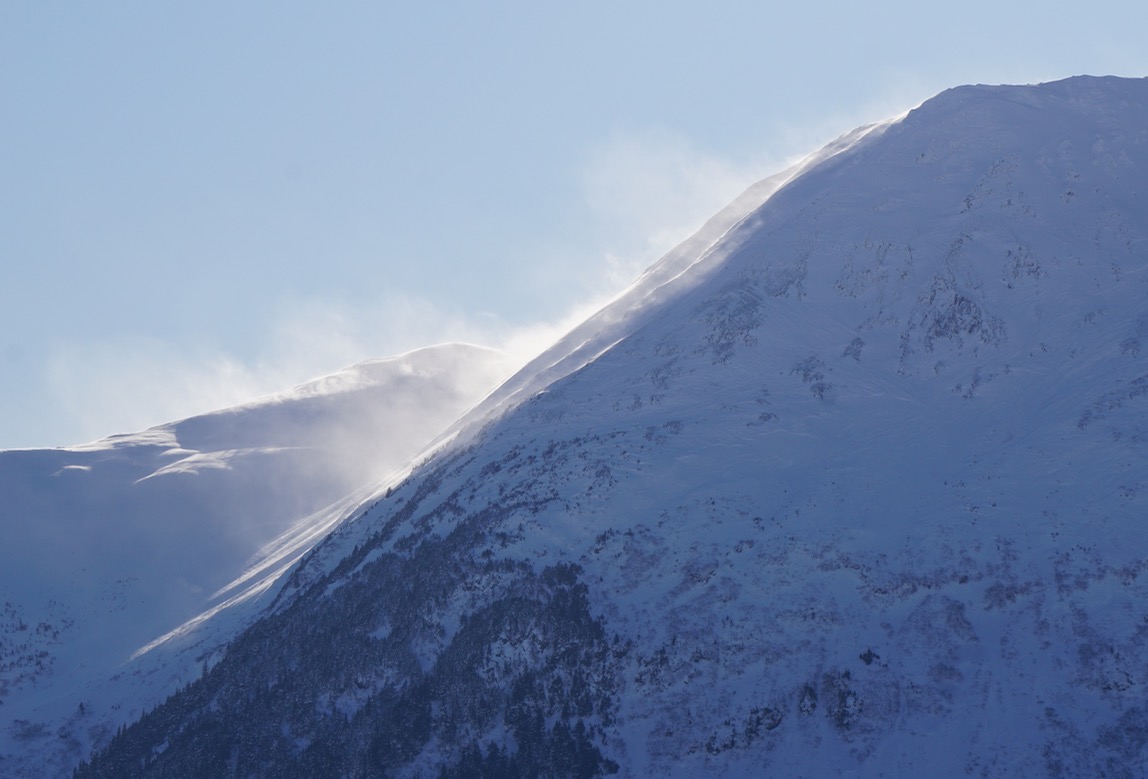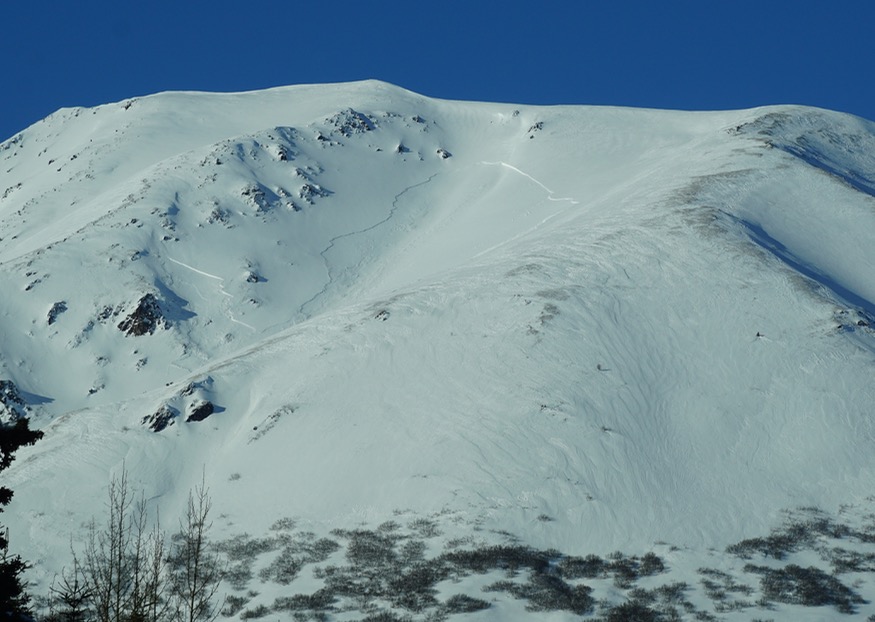The outflow winds (west/northwest) continued yesterday, finally easing off in the late afternoon. Today determining whether or not the slope you are traveling on was wind affected will be the key to avoiding most of the current avalanche issues. Wind slabs remain possible in wind loaded terrain. The snowmachine triggered avalanche in Lynx Creek, that is highlighted above in recent avalanches, occurred on a slope that was being actively loaded yesterday and the day before. This looks to have potentially been initiated failing below the wind loaded layer and then stepping down deeper to older buried weak snow (more below in Avalanche Problem 2). Another part of the equation is that underneath the wind affected snow there could be buried surface hoar making the wind slabs easier to trigger and possibly propagate further above or to the side than expected. There were a couple small skier triggered avalanches in upper Girdwood Valley yesterday including one remote trigger that were believed to have failed on this layer around a foot deep. Be on the lookout for stiff snow over softer snow, shooting cracks and drifting patterns near ridgelines and in gullies where the snow looks pillowed or fat. Much of the core Turnagain Pass area seems to have been spared but as soon as you get to either end of the pass the wind effect is fairly obvious. Summit Lake, which is out of the forecast area, was harder hit by the outflow winds and there was a natural wind initiated avalanche cycle over the past couple days.
Cornices: Avoid travel on or underneath cornices.
Loose snow avalanches: In areas that were protected from the wind, sluffs are possible in steep terrain.
Sun effect: With calm winds and temperatures increasing today look for signs of sun effect on steep solar aspects: moist surface snow, small roller balls or loose snow avalanches in protected spots, especially below rocky areas. Slopes that are also wind loaded may be more prone to triggering if they heat up enough.

Wind transport in the early afternoon on the northeast corner of Pyramid Peak yesterday. 3.5.20

Wind triggered avalanche that occurred yesterday on Summit Peak in Summit Lake yesterday. Note the wind effect on the slopes and scoured ridges. 3.5.20.





